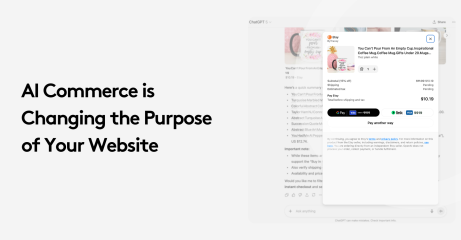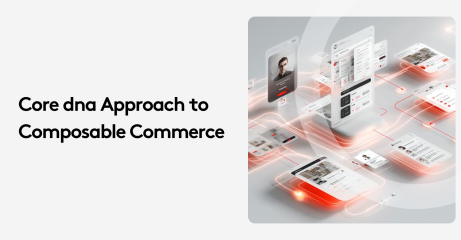Composable DXP: Choosing the Right Platform for Your Business
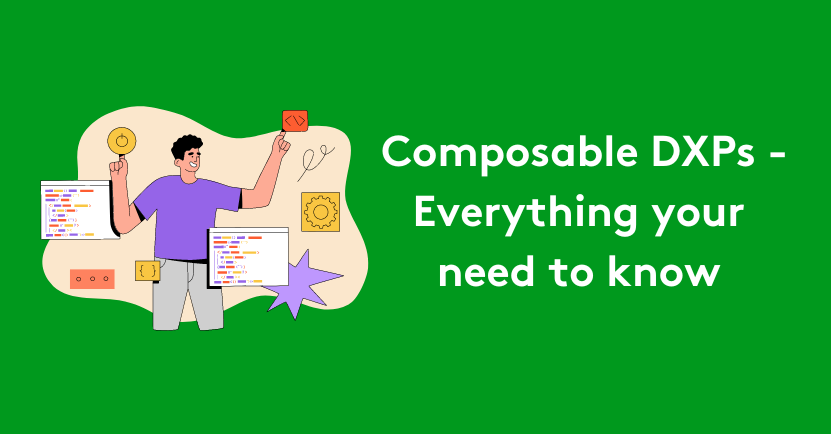
A 2021 McKinsey report said that 71% of consumers expect companies to deliver personalized interactions. Why? Because every customer likes being cared for. Digital Experience Platforms (DXPs) are a great way to ensure this. A Composable DXP an intelligent software solution that can create, manage, deliver, and optimize digital experiences across various channels and touchpoints.
But, with so many options available in the market, it can be overwhelming to choose the right one. Your business needs a flexible and customizable approach offered by a composable DXP to truly stand out from the competition. That's where a composable digital experience platform comes in. In this article, we will explore the benefits of composable DXPs and discuss tips for choosing the right platform for your business, considering:
- Scalability
- Integration capabilities and,
- Security
On this page:
What is a DXP?
Digital Experience Platforms (DXPs) are software solutions that help businesses create, manage, deliver, and optimize digital experiences for their customers. These experiences can include websites, mobile apps, social media, email, and other channels.
A composable DXP typically include a content management system (CMS) to create and manage digital content and capabilities for analytics, personalization, and marketing automation. These features enable businesses to track customer engagement, deliver personalized content, and automate marketing campaigns across multiple channels
By providing a seamless experience across multiple touchpoints, a composable DXP can help businesses increase customer engagement and loyalty and ultimately drive growth and revenue.
What is a composable DXP?
One-size-fits-all DXP solutions can often be expensive and restrictive for businesses. This is where the need for a composable digital experience platform arises.
Imagine if you could build your own digital experience platform (DXP) like a set of Lego blocks - choosing the right components, features, and functionalities that fit your specific business needs. This is the idea behind composable DXPs.
Composable DXPs allow businesses to choose and combine components from different vendors, such as CMS, analytics, personalization, and marketing automation tools, rather than being locked into a solution from a single vendor.
This gives businesses greater flexibility, scalability, and the ability to experiment with new technologies and solutions without disrupting their digital experience. In essence, a composable DXP strategy is like a toolbox that allows businesses to mix and match the tools they need to build the perfect digital experience.
To understand composable DXPs and their functionality better, it is important to understand how composable architecture works.
What is composable architecture and how does it work?
Composable architecture is a new software development paradigm emphasizing modularity, flexibility, and agility. Instead of relying on a single monolithic platform or application, composable architecture breaks down software into smaller, modular components that can be developed and maintained independently. This makes it easier for businesses and marketing teams to scale their systems, add new features and functionalities, and try out a new tech stack.
Composable architecture can be compared to building with Lego blocks. Just like Lego blocks, composable architecture breaks down complex software systems into smaller, independent components. These components can be easily assembled and reassembled to build a custom solution that meets the unique needs of a business. Further, you can create endless unique Lego structures by combining blocks in different ways.
Similarly, businesses can create a custom software solution with composable architecture by correctly selecting and combining the right components. This approach allows businesses to create software systems that are tailor-made for their unique needs rather than relying on a one-size-fits-all solution.
Why are organizations moving from monolithic to composable DXP?
Monolithic DXPs were built to provide a single, all-encompassing solution that addressed all of a business's needs. However, this approach becomes less effective as businesses grow and evolve. Competitive modern businesses require better, more scalable DXP solutions that can grow with them.
With a monolithic DXP, businesses are limited to the features and functionalities provided by the vendor. They cannot add or remove components and may be forced to use tools that do not meet their specific needs. In contrast, composable DXPs allow businesses to choose the components they need, whether they're developed in-house or by third-party vendors. This gives businesses greater flexibility to customize their software solutions to meet their unique requirements.
Scalability is another key driver for the move toward composable DXPs. As businesses grow and their needs change, they need a software architecture that can scale with them. With a monolithic DXP, businesses may struggle to scale their systems effectively and may end up with a solution that is bloated and difficult to maintain. Composable DXPs, on the other hand, are designed to be modular and easily scalable. Businesses can add new components as needed and remove ones that are no longer required without affecting the rest of the system.
Finally, composable DXPs are more agile and adaptable than monolithic DXPs. With a monolithic DXP, businesses are often locked into a specific technology stack, making it difficult to keep up with the pace of innovation. Composable DXPs, on the other hand, allow businesses to experiment with new technologies and tools and to quickly adapt to changing business needs. This makes it easier for businesses to innovate, stay competitive, and deliver better customer experiences.
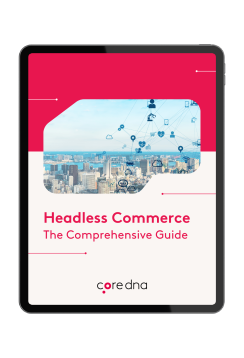
Headless Commerce: The Ultimate Guide
To stay competitive in today market, an omnichannel experience is mandatory and can only be achieved with a headless platform. With Core dna decoupled solution, you get the best of both worlds: A headless commerce with content preview and templates for a faster time to market.
What is the use case for a Headless DXP?
A Headless DXP (Digital Experience Platform) solution is a type of composable DXP that separates the front end (presentation layer) of a website or application from the back end (content management and delivery). In a headless DXP, the back end provides content and functionality through APIs (Application Programming Interfaces), which can then be consumed by any front-end application or device.
This approach offers several advantages over traditional monolithic DXPs. For example, it allows businesses to build custom front-end experiences that are tailored to specific devices and user needs without being constrained by the back-end system. It also allows businesses to experiment with new front-end technologies and tools without affecting the underlying content and functionality.
Another advantage of a headless DXP solution is that it enables faster time-to-market for new products and services. Because the front-end and back-end systems are decoupled, businesses can develop and deploy new front-end experiences without disrupting the back-end system. This allows them to iterate quickly and respond to changing customer expectations more effectively.
Additionally, a headless DXP solution offers greater flexibility and scalability than traditional DXPs. Because the front-end and back-end systems are decoupled, businesses can scale each system independently, which allows them to respond to changing traffic demands more effectively. This enables businesses to add new channels and touchpoints more easily without disrupting the underlying content and functionality.
Moving from a CMS to DXP
Organizations increasingly move from traditional CMS (Content Management Systems) to DXP (Digital Experience Platforms) to deliver a better digital customer journey across multiple touchpoints and channels. While CMSs primarily focus on managing content and providing basic functionality for websites, DXPs provide a more comprehensive solution that includes content management, personalization, analytics, and other critical features for delivering a seamless and engaging customer experience.
One of the main reasons organizations are moving from CMS to DXP is the changing expectations of customers. Today's customers expect a personalized and seamless experience across all channels and touchpoints, and CMSs often fall short of delivering this level of experience. DXPs, on the other hand, are designed to meet the needs of today's customers, providing features such as personalized content, omnichannel delivery, and real-time analytics.
Another reason why organizations are moving from CMS to DXP is the need to unify and streamline their digital operations. With the proliferation of digital channels and touchpoints, many organizations struggle to manage their digital presence effectively. DXPs provide a centralized platform that enables organizations to manage their content, data, and digital experiences from a single location, which improves efficiency and reduces costs.
What is the importance of DXPs for a B2C business?
DXP (Digital Experience Platform) is essential for B2C businesses that want to deliver an exceptional customer experience across all channels and touchpoints. In the B2C space, the customer experience is paramount. DXPs provide a comprehensive solution for managing content, data, and digital experiences that can help businesses deliver a more engaging and personalized customer experience.
One of the critical features of a DXP for B2C is the ability to provide a personalized experience for each customer. Personalization is critical in B2C, as customers expect brands to understand their preferences and provide relevant content and offers. DXPs provide features such as customer data management, segmentation, and targeting that can help businesses deliver personalized experiences at scale.
Another important feature of a DXP for B2C is the ability to deliver a seamless omnichannel experience. B2C customers interact with brands across multiple channels and touchpoints, and DXPs provide a centralized platform for managing these interactions. With a DXP, businesses can deliver consistent and relevant experiences across all channels, including web, mobile, social media, and email.
DXPs also provide robust analytics capabilities that enable businesses to track and measure the effectiveness of their digital experiences. B2C businesses can use these analytics to gain insights into customer behavior, preferences, and needs, which can help them improve their digital experiences and drive more conversions.
What is the best DXP for B2C businesses?
When it comes to choosing the best DXP for B2C, there are several factors to consider. One important consideration is the platform's ability to integrate with other systems and technologies. B2C businesses typically use various tools and systems to manage their digital operations. The DXP should be able to integrate seamlessly with these systems to provide a centralized platform for managing all digital experiences.
Another important factor to consider is the platform's scalability and flexibility. B2C businesses are constantly evolving, and the DXP should be able to scale with the business's needs. The platform should also be flexible enough to adapt to changing customer needs, market trends, and technological advancements.
Open Digital Experience Platform
An Open Digital Experience Platform (ODXP) is a great option for B2C businesses that want to deliver exceptional customer experiences across all channels and touchpoints. ODXP provides a modular and composable architecture that enables businesses to build and deliver customized digital experiences quickly and efficiently. ODXP is also flexible and scalable, making it a great choice for B2C businesses looking to expand their digital operations.
How To Start Building Your Own Composable DXP
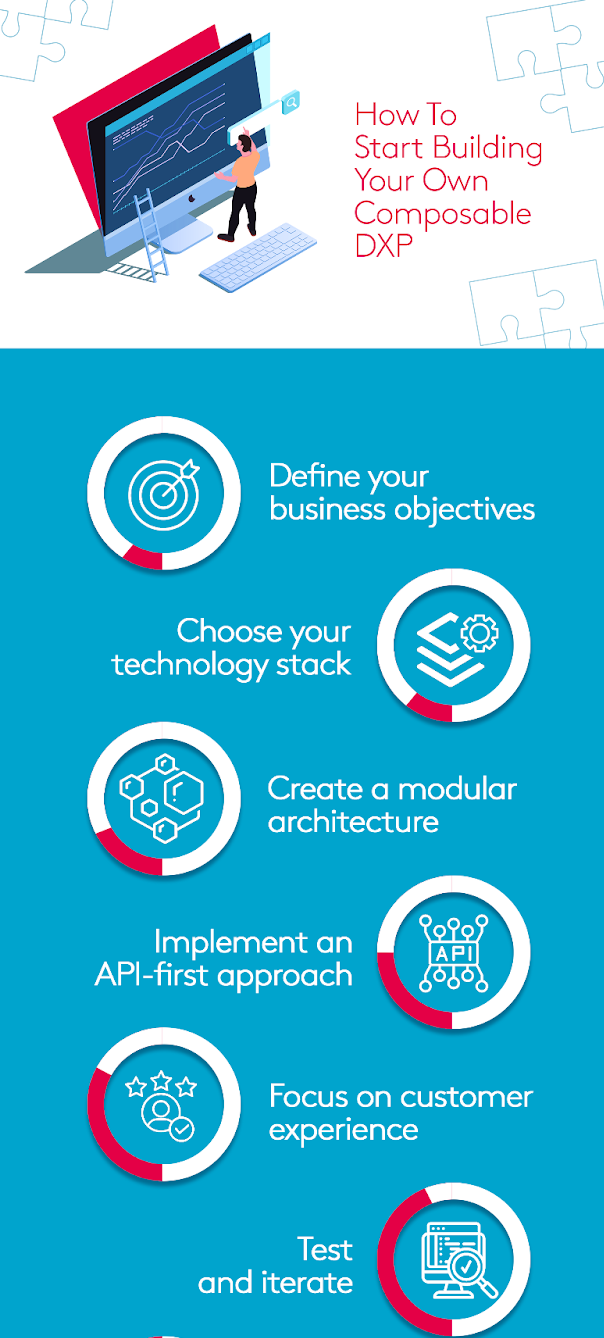
Building your own composable DXP solution can be complex, but it's achievable with the right approach and tools. Here are the steps you can take to start building your own composable DXP:
Define your business objectives: Before you start building a composable DXP, you must clearly understand your business objectives and the digital experiences you want to deliver to your customers. This will help you determine the features and capabilities you need in your DXP.
Choose your technology stack: Your technology stack will depend on your business requirements and the digital experiences you want to deliver. You may want to choose a headless CMS for content management, a customer data platform (CDP) for customer data management, and a front-end development framework for building your user interface.
Create a modular architecture: Composable DXP applications should have a modular architecture that allows you to add and remove components as needed. This will make it easier to scale your DXP and adapt to changing business needs. You can use microservices architecture to create a modular approach for your DXP.
Implement an API-first approach: An API-first approach is crucial for building a composable DXP. This means that all components of your DXP should have an API that can be used to integrate with other systems and tools. This will enable you to create a seamless customer experience across all touchpoints.
Focus on customer experience: The key to building a successful composable DXP is to focus on delivering exceptional customer experiences. You should design your DXP with the customer in mind and use data and analytics to understand customer behavior and preferences.
Test and iterate: Building a composable DXP solution is an iterative process. You should regularly test and iterate your DXP to ensure it meets your business objectives and delivers the best possible customer experience.
When built well, composable DXPs can prove to be an irreplaceable asset for your businesses and become the true core of your digitization efforts.

How to Choose the right eCommerce Platform
Definitive guide to choosing an eCommerce platform.


